Again we were up early at 5.30 am for our visit to Kuelap. Dad looked fine despite his hospital visit and stitches the previous night which were illustrated by a sizeable bandage on his left leg. Off again we went with Carlos. This time we also had with us an experienced guide called Luis (recommended by Carlos) who was also a committed Shamen, something which only intrigued me more.
We left on this trip early so we could be the first people to arrive at Kuelap
. In Chachapoyas there are several tour groups that leave at 8.00am arriving at the ruins just before midday and I was keen to miss them, plus see Kuelap covered in mist and clouds on our own.
Kuelap is the most famous ruin in the Chachapoyas region (in many peoples eyes this fortress rivals Machu Picchu as a spectacle) and whilst there had been a little archaeological investigation (some since my last visit in 2008) there is still surprising little known about this huge Chacha fortress. Kuelap is almost two hours drive south of Chachapoyas on the opposite banks of the Rio Utcubamba to the city and on top of one of the adjacent mountains. This was a vast city, which is now 600m in length and 110m wide, consisting of the remains of hundreds of circular houses which housed thousands of inhabitants. To arrive from Chachapoyas we endured a two hour drive, firstly down the beautiful Utcubamba Valley to Tingo where the road headed off eastwards and started its climb up towards the ruins
. The road had been improved since my last visit, however it still clung, sometimes haphazardly to the sides of the mountains as we ascended in Carlos’ car. On the way Luis gave us some background to Kuelap which was both interesting and in some cases a little fantastical. After some animated conversation, Luis must have realised that he was starting to lose both of us so he started to concentrate more on what had been discovered and the details that were generally agreed on, by academics and archeologists.
We broke for breakfast as we neared the summit at the last tiny village where we ate in the restaurant where the men’s toilet was literally a prefab small room constructed right in the middle of the seating area. However the homemade jams more than made up for this somewhat surreal and strange experience (especially when someone used it).
When we arrived at the entrance we were the only ones there and we started the small climb up to the ruins
. These were smothered in impenetrable mist when we arrived, but this swirled around during the visit, revealing great views one minute and then obscuring everything the next. It was during this climb that we got the first of many soakings as the rains returned. Dad donned his waterproof poncho and started looking like a Penguin staggering up the path, at this 3200m altitude. On we went and Dad started finding the altitude somewhat tough again, however the short walk was completed without any problems such as those we experienced on the previous days and soon we were standing beside the huge sand coloured walls several meters thick with Luis giving us a comprehensive run down of the ruins history.
As we started wandering around the vast outer walls the size of Kuelap became apparent and Dad was suitably impressed. There were some unnecessary new buildings in the vicinity since my last visit, but these were thankfully just an irritant and did not mask the view
. As we got to the first entrance the thick mist again started to sweep in over the ruins and the spectacle was quite magical. It was also great being there in a group of just three and Luis took his time breaking down the highlights and putting them into historical context. He was also kind enough to elaborate on how the city may well have looked in its pomp, with current research indicating rings of Sarcophagi and Mummies lining some of the outer perimeter.
This visit was making far more sense than the first one I made some six years ago and Luis immediately moved us past the first entrance and walked us further along the towering walls to the second. Here we ascended the now treacherous slippery stone pathways (Dad did really well) up to the inner part of the complex and then straight up onto the first “floor” where one of the odd Inca buildings is located. This was constructed by the Incas after their successful invasion of the Chachas, just before the Spanish arrived
. Here we looked at some of the recent excavations as the rains started to fall again.
Walking back through the main part of the complex in amongst the hundreds of circular remains of buildings, adorned with the huge clumps of coloured (yellow, grey, white) lichen hanging off the trees with their glistening Red Bromeliads was magical and I realised just how much I enjoyed this site and how the Chachas fascinate me.
It took us two and half hours to complete the ruins with Luis. He gave us an excellent and comprehensive picture of Kuelap and as we finished we met the hordes of tourists on the trips from Chachapoyas arriving to see the ruins. The rain was literally bucketing down now and we were pleased to leave. Back at the car, Carlos drove us back down to Tingo and we managed to get a last minute lunch at a local restaurant whilst the rains clattered off the roof.
With Dad now feeling the pace after the previous night in the hospital and the rain seemingly not about to end, we cancelled the idea of visiting the small ruins at Olan and at Carlos’s suggestion decided to take a small narrow mountainous rarely used road back to Chachapoyas.
This drive, whilst taking a long time, turned out to be a master stroke as we saw many beautiful wild orchids growing at the side of the road and spotted several interesting birds including a beautiful green Andean Woodpecker
. The dirt road also wound its way through several small farming villages, some sprinkled (like much of this area) with uncharted Chacha ruins plus we also viewed the pre-Inca road at Levanto.
Back at Chachapoyas the road arrived on the summit of an adjacent hill affording a fabulous view of the mountainous city. The rain at least held off for this. Back at our accommodation we said goodbye to to the excellent Luis and prepared to leave the following morning.
The following morning we had to journey the two hours south to Leymebamba along the Utcubamba river. Here Dad and I decided we would base ourselves in the village of Leymebamba whilst we explored this part of the Chacha region plus hopefully get to see some hummingbirds. Eduardo kindly organised a taxi for the trip and luckily we were much more fortunate with the weather. We had breakfast back at the excellent Cafe Fusion, where we met Rebecca a peace corp volunteer from the US, who lived in Leymebamba. The taxi travelled down the same route as we had gone with Carlos the previous day and after we passed Tingo we stopped briefly to see circular Chacha ruins crumbling on the side of mountains. Past these ruins, it was now virgin territory for my father and this is one of the most beautiful roads in the area. Huge towering mountains either side of the road were dramatic and almost leaned over the river beautiful. Giant trees with hanging yellow and grey lichen follow the winding Utcubamba river. Large thin weird cacti cover the low slopes of these dramatic mountains and the rock patterns were breathtaking. This is such a special part of the world. The only downside was the encroaching buildings of the two settlements en route to Leymebamba (which unfortunately appear to be expanding).
Leymebamba seemed to be very much the same, and this was a trip down memory lane again (I rarely return to places I have been before - but this is so special). I could see the roads where I had set off on the Lagunas del Condors trek on the previous visit, plus many of the shops and the previous guesthouse I had stayed in, were still here. This town stretches from the river at the valley floor almost up to the top of the mountains. Its a long winding road through the spaced out town and soon we were climbing the new road (now paved) to the entrance of the famous Leymebamba museum.
There opposite the museum was the Kenti Cafe. When I was here before I had photographed the hummingbirds here and now the owner Adriana had built a deluxe bed and breakfast and as a treat Dad and I were booked in for two nights. Adriana Van Hagen is one of the world’s leading experts on the Chacha people and when I met here in 2009 she also introduced me to Keith Muscutt, one of the other experts (there aren't many so I was fortunate to meet two of the main ones). This all happened whilst I was photographing hummingbirds in the grounds of her cafe. In 2009 she also invited me for lunch with Keith and in the afternoon I managed to photograph the Marvellous Spatuletail hummingbird, one of the rarest birds on the planet (and one of the most extraordinary) and endemic to the Utcubamba region. There are now believed to be just 250-400 left, and its an extraordinary bird. The size of a moth it has four tails, two with large discs almost the size of its body located on the very tips of the tails. i was really keen to show this to my father.
Unfortunately Adriana was in London working when we arrived and so we met her manager Athelita. She immediately started to look after us, despite her complete lack of English and showed us to our rooms in the middle of the Hummingbird garden. The cottages were made with local materials, were powered by solar power and were very modern with huge balconies and large comfortable beds, overlooking the hummingbird’s play areas. Wow - what a treat. The bathrooms were works of art in themselves, although Dad found his slightly perplexing as he could not figure out how the shower water drained.
Within minutes Athelita had assembled an amazing lunch with a salad sourced directly from Adriana’s garden, fresh bread and beautiful roast pork - delicious. After lunch we started to focus attention on the hummingbirds, but as luck would have it the daylight vanished and the rain returned. Unfortunately we were not able to accomplish much that day. We did though devour another magnificent dinner.
The next morning, the rain was even worse and as I awaited for Dad at breakfast I was wondering if this would also turn out to be a damp squib. When he did eventually emerge, he arrived to say he had been ill all night and was unable to do anything. Oh dear. I decided with Athelita that we would stay an extra night and that afternoon we took Dad down to the local surgery (we had to go any way so his three day old wounds could be checked for infection). Luckily here we met Rebecca, the lady from Peace Corps whom we met in Chachapoyas and she kindly did all the translation. Soon Dad had perked up and with the weather improving the tide of bad luck seemed to be changing.
With the outlook seemingly brighter we decided on a short walk around town to buy some of the famous yoghurt and see the local women’s crafts, before returning to the Kenti Cafe. Athelita also kindly invited Rebecca for dinner, so that night we had a great meal again with Dad seemingly well past the worst and now ordering alcohol. Rebecca had also trekked the Condors trek and was visibly impressed when I said I had done that (albeit some six years ago), so we both reminisced about that. I was also somewhat disappointed not to do the Vira Vira trek because of my own leg infection, but at least now the leg was fully on the mend.
The next morning there was not a cloud in the sky. Athelita immediately suggested a visit to a family she knew, who lived on the way to the Laguna del Condors and had spotted a family of Andean Condors nesting on their property up on the mountain ledges. Unfortunately as luck would have it - they did not show up, unlike the family of these majestic birds we had witnessed with Bryony and Annie on the way to Cusco, but we did spot several hummingbirds.
Back at the Kenti Cafe, the hummingbirds there were super active in the warm morning sunshine and I started photographing. I was though disappointed to find out that the Marvellous Spatuletail had not been seen in Leymebamba for well over twelve months. As there are believed to be around only 250 left, this was a blow and a great shame as I wanted to show Dad. However the Swordbill Hummingbird was there and I was able to photograph that on one of its fleeting visits. The other eight species were rampant. The blue skies really brought them out and the garden was filled with their tale tale insect-like buzzing. The blue eared variety with their brightly turquoise feathers fought each other loudly over territory. It was all action and with such speed. I believe Dad now understands my obsession with photographing these tiny, lightening fast creatures.
After we had another excellent locally sourced meal, we crossed the road out front and entered the museum. I had always rated this museum, but now I had read Keith’s and Adriana’s work plus trekked to the Laguna del Condors, everything displayed made so much more sense - despite the lack of English displays. We ventured slowly around the exhibition until we reached the glass room preserving the 290 odd mummies which had been found at the Lagunas del Condors in 1997. This is still (on my third visit) a simply awe inspiring sight. Gristled, drooped with cloth and placed in a foetal position - many are still completely covered in cloth like large eggs. Those that are exposed cover their faces with their fingers and appear to be screaming or cowering. Its all so memorable.
After an evening devoted to chasing hummingbirds around the garden, it was time to pack and leave. This had been a fantastic stay and whilst it was a shame to miss Adriana and her husband Oscar, Athelita had been the perfect host. Hopefully I can catch up with them on my next visit.
Kuelap, Mummies, Ruins, Hummingbirds
Thursday, September 25, 2014
 Leymebamba, Amazonas, Peru
Leymebamba, Amazonas, Peru
Other Entries
-
60Charging Hippos, Delta, Glamping & Roaring Lions
Jun 2592 days prior Maun, Botswanaphoto_camera4videocam 0comment 0
Maun, Botswanaphoto_camera4videocam 0comment 0 -
61Creationists, Rare Birds, Rock Art & Meteorites
Jun 2889 days prior Rundu, Namibiaphoto_camera5videocam 0comment 0
Rundu, Namibiaphoto_camera5videocam 0comment 0 -
62Bushmen, Hunts, the San, Gravel Roads, Car Trouble
Jul 0483 days prior Tsumkwe, Namibiaphoto_camera8videocam 0comment 0
Tsumkwe, Namibiaphoto_camera8videocam 0comment 0 -
63Animals, waterholes, dust, more dust
Jul 1077 days prior Etosha National Park, Namibiaphoto_camera4videocam 0comment 0
Etosha National Park, Namibiaphoto_camera4videocam 0comment 0 -
64Fog, concrete, sand, cold, wind plus illness
Jul 1770 days prior Walvis Bay, Namibiaphoto_camera5videocam 0comment 0
Walvis Bay, Namibiaphoto_camera5videocam 0comment 0 -
65Red Dunes, Mud Flats, Quiver Trees plus Sand
Jul 2364 days prior Keetmanshoop, Namibiaphoto_camera5videocam 0comment 0
Keetmanshoop, Namibiaphoto_camera5videocam 0comment 0 -
66Breaching Sharks, Rooibos and Rain
Aug 0155 days prior Vanrhynsdorp, South Africaphoto_camera4videocam 0comment 0
Vanrhynsdorp, South Africaphoto_camera4videocam 0comment 0 -
67Robbery, Raw Fish, Cloudy and Drizzle
Aug 0551 days prior Lima, Peruphoto_camera4videocam 0comment 0
Lima, Peruphoto_camera4videocam 0comment 0 -
68Camille Schaeffer and Family RIP
Aug 1145 days prior Lima, Peruphoto_camera1videocam 0comment 0
Lima, Peruphoto_camera1videocam 0comment 0 -
69Rest, Lines, Vines and Sand
Aug 1244 days prior Ica, Peruphoto_camera4videocam 0comment 0
Ica, Peruphoto_camera4videocam 0comment 0 -
70Incas, Ruins, Trains, Parasites, Veganism
Aug 1937 days prior Cusco, Peruphoto_camera4videocam 0comment 2
Cusco, Peruphoto_camera4videocam 0comment 2 -
71Cloud Forest, Ruins, Birds, Animals, 50th
Aug 2432 days prior Manu National Park, Peruphoto_camera5videocam 0comment 0
Manu National Park, Peruphoto_camera5videocam 0comment 0 -
7250th part 2, Otters, Macaws, Jaguar, Tiramisu
Aug 3026 days prior Puerto Maldonado, Peruphoto_camera6videocam 0comment 0
Puerto Maldonado, Peruphoto_camera6videocam 0comment 0 -
73Finches, Volcanos, Tortoises & Darwin
Sep 0322 days prior Puerto Ayora, Ecuadorphoto_camera7videocam 0comment 0
Puerto Ayora, Ecuadorphoto_camera7videocam 0comment 0 -
74Sharks, Penguins, Sea Lions and Boobys
Sep 1015 days prior Puerto Villamil, Ecuadorphoto_camera6videocam 0comment 0
Puerto Villamil, Ecuadorphoto_camera6videocam 0comment 0 -
75Frigates, Poor Service, Iguanas, Diving Pelicans
Sep 1312 days prior Guayaquil, Ecuadorphoto_camera5videocam 0comment 0
Guayaquil, Ecuadorphoto_camera5videocam 0comment 0 -
76Car Crash, Chachas, Mules and Blood
Sep 187 days prior Chachapoyas, Peruphoto_camera4videocam 0comment 0
Chachapoyas, Peruphoto_camera4videocam 0comment 0 -
77Kuelap, Mummies, Ruins, Hummingbirds
Sep 25 Leymebamba, Peruphoto_camera6videocam 0comment 0
Leymebamba, Peruphoto_camera6videocam 0comment 0 -
78Sarcophagi, Fountains of Blood, Horseback
Sep 283 days later Cuispes, Peruphoto_camera3videocam 0comment 0
Cuispes, Peruphoto_camera3videocam 0comment 0 -
79Waterfalls, Rain and Loud Peruvian Pop Music
Sep 294 days later Pedro Ruiz, Peruphoto_camera4videocam 0comment 0
Pedro Ruiz, Peruphoto_camera4videocam 0comment 0 -
80Hummingbirds, Orchids, Coffee and Stomach Bugs
Oct 027 days later Moyobamba, Peruphoto_camera5videocam 0comment 0
Moyobamba, Peruphoto_camera5videocam 0comment 0 -
81Battlefields, Zulus, 1879, Leaving South Africa
Oct 1823 days later Dundee, South Africaphoto_camera4videocam 0comment 0
Dundee, South Africaphoto_camera4videocam 0comment 0 -
82Mr India, X Factor Naga style, Exotic Food
Nov 0642 days later Mokokchung, Indiaphoto_camera5videocam 0comment 0
Mokokchung, Indiaphoto_camera5videocam 0comment 0 -
83Burma, Headhunters, Opium & Dust
Nov 0945 days later Launghe, Myanmarphoto_camera4videocam 0comment 0
Launghe, Myanmarphoto_camera4videocam 0comment 0 -
84History, bad guesthouses, hills, Wakching
Nov 1450 days later Mon, Indiaphoto_camera4videocam 0comment 0
Mon, Indiaphoto_camera4videocam 0comment 0 -
85Skulls, Fertility, Opium, Anghs, Warriors
Nov 1753 days later Shengnya, Indiaphoto_camera5videocam 0comment 0
Shengnya, Indiaphoto_camera5videocam 0comment 0 -
86Elders, Changs, Culture, Families and Skulls
Nov 2258 days later Tuensang, Indiaphoto_camera5videocam 0comment 0
Tuensang, Indiaphoto_camera5videocam 0comment 0 -
87Sangai Festival - Kang, Hockey/Wrestling, Polo etc
Nov 2864 days later Imphal, Indiaphoto_camera5videocam 0comment 0
Imphal, Indiaphoto_camera5videocam 0comment 0 -
88Hornbill Festival, Loin Looms & Naga Culture
Dec 1076 days later Kohima, Indiaphoto_camera10videocam 0comment 0
Kohima, Indiaphoto_camera10videocam 0comment 0 -
89Birds, Rubbish, Grasslands, Rubble, Tribes etc
Dec 1480 days later Nakhatrana , Indiaphoto_camera5videocam 0comment 0
Nakhatrana , Indiaphoto_camera5videocam 0comment 0 -
90Embroidery, Rogan, Block Printing, Tribes
Dec 1783 days later Bhuj, Indiaphoto_camera5videocam 0comment 0
Bhuj, Indiaphoto_camera5videocam 0comment 0 -
91Lions, Nitin, Bird Spotting, Sleeper Bus Part 1
Dec 2187 days later Gir, Indiaphoto_camera6videocam 0comment 0
Gir, Indiaphoto_camera6videocam 0comment 0 -
92Island Life, Portuguese Colony, Christmas
Dec 2591 days later Diu, Indiaphoto_camera4videocam 0comment 0
Diu, Indiaphoto_camera4videocam 0comment 0 -
93Restaurant Tombs, Mosques, Markets
Dec 2894 days later Ahmedabad, Indiaphoto_camera5videocam 0comment 0
Ahmedabad, Indiaphoto_camera5videocam 0comment 0 -
94Birds, NYE, Dhows, Feral Dogs, Shaves
Dec 3197 days later Mandvi, Indiaphoto_camera6videocam 0comment 0
Mandvi, Indiaphoto_camera6videocam 0comment 0 -
95Blue Moon, Salt Flats, Crafts
Jan 0299 days later Bhujodi, Indiaphoto_camera5videocam 0comment 0
Bhujodi, Indiaphoto_camera5videocam 0comment 0

 Leymebamba, Amazonas, Peru
Leymebamba, Amazonas, Peru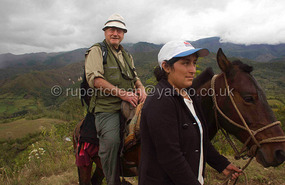
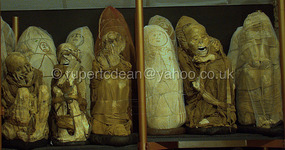

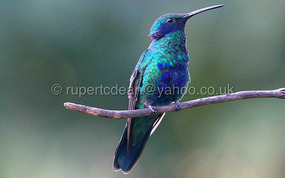
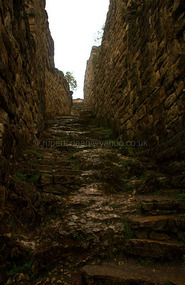
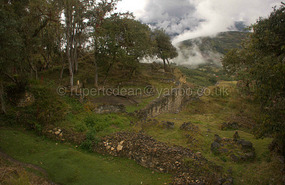







2025-05-22